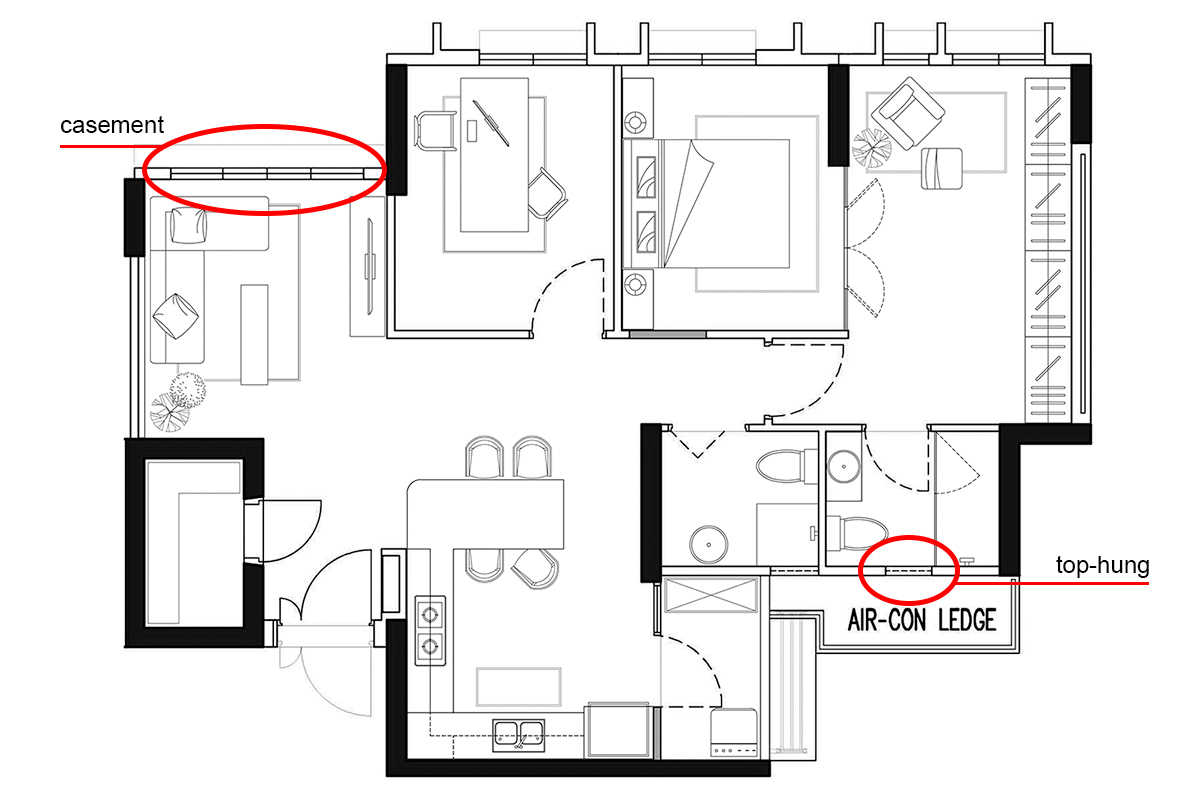So, you’ve got your BTO secured and want to embark on your first renovation—but you have no idea what all the lines, shapes and letters on your floorplan actually mean. Before you accidentally plan to knock down a structural wall or confuse the air-conditioning with a wardrobe, here’s how you can read your BTO floorplan and identify all its elements at a glance.
The walls

There are essentially three types of walls you can find in a BTO flat: structural, gable-end and standard.
The structural walls can be identified by an eye-catching bold line. They ensure that the flat is structurally sound and can thus not be hacked.
Gable-end walls are a bit more difficult to spot—they’re usually characterised on the floorplan by a narrow rectangle with a second hollow rectangle inside. They are unique to corner units and are designed to keep the heat at bay. Since they’re exclusively external, they obviously cannot be hacked.
Standard walls are the simplest structure on the floorplan: narrow rectangles that separate most of the rooms.
The doors

Most BTO flats will have two types of doors: swing doors and folding doors. Swing doors can be easily recognised by their rounded wedge shape while folding doors look like small triangles. Solid lines indicate that those doors are already provided in the flat, while dashed lines signify an empty doorway that can be fitted out with a door later on.
Most of the doors in your BTO flat are likely swing doors, as folding doors are usually limited to bathroom entrances and occasionally service yards.
A key thing to note is that the floorplan emulates how the real doors open inside the flat, so make sure to study the arch and direction of the swing doors and the way the folding doors move before you make any renovation plans.
The windows

While there are three types of windows in HDB flats, you’ll likely only see two in any one flat. The main windows along the living area and bedrooms are usually either sliding or casement windows, with casement windows being the most common.
Casement windows are represented by three parallel horizontal lines and an extension showing the reach of the window when opened. This can be a simple rectangle around the windows or a wedge showing the way each window swings open.
Sliding windows are more difficult to spot and usually represented by two horizontal lines stacked every closely on top of each other and almost meeting in the middle, replicating a real door sliding close.
The bathroom is where you’ll likely find the third window style, namely top-hung. Top-hung windows are usually shown as short dashed lines inside the wall and can often be found inside or next to the shower cabin.
Laundry racks, wardrobes and more

Some other noteworthy elements on many BTO floorplans are the laundry racks, wardrobes and various furniture pieces and built-ins.
Laundry racks are pretty much always next to the service yard and characterised by a spacious rectangle with three lines inside, resembling the top-down view of an actual laundry rack. Wardrobes are less consistent across floorplans; they are often rectangles with various lines inside, meant to resemble clothes hangers.
The rest of the furniture and built-in elements tend to be fairly straightforward when drawn properly and often include sofas, beds, tables, chairs, toilets, sinks and kitchen appliances.
Letters and abbreviations
Some letters and abbreviations that you should take note of when studying your BTO floorplan are HS, W/D, DB and F.
HS refers to the household shelter, which is mandatory in every BTO flat and always surrounded by structural walls, W/D refers to washer/dryer and applies to the service yard, DB signifies the electrical switchboard of the flat, and F simply stands for the fridge.
Want to see this renovated BTO flat in all its glory? Check it out here.
Floorplan courtesy of Authors in Style.



